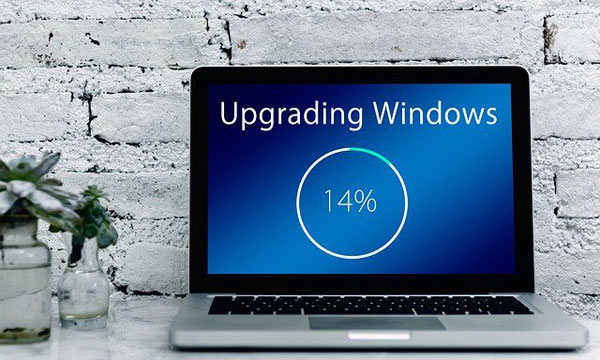A common complaint a lot of computer users have is their system running slow. This can be quite annoying, especially if you haven’t had the system for very long. There are many quick fixes that you can deploy, like buying an SSD or purchasing more RAM, but all of these methods cost money. But in truth, the first thing you should be looking at are free methods that you can use right now, to enhance your systems performance. In the 10 tips to follow, you will find a number of methods and techniques that you can use, to make your system faster, without having to spend any money.
That said, not all methods are fool-proof, which means, there could be some trade off. More performance could mean less battery life on your laptop, or you may have to uninstall a program, that is slowing down your system. It’s up to you to decide what you’re willing to sacrifice and what you’re not.

- Free Up Hard Disk Space
Your hard drives will naturally accumulate a lot of junk files over time. Fortunately Windows provides a tool called Disk Cleanup which you can use to remove junk and unnecessary files from your system. This tool can be used to remove files from a wide range of areas of your operating system. Whether it’s the standard recycle bin, temporary folders, installation files, internet cache files or Windows Update cache files.
- Stop Programs from Running at Boot
When your system boots up, there are a number of applications that will start up automatically, along with certain processes, many of which you may not even need. This is something that you do not have to allow, as it is possible to control which programs start at boot, and which do not. However, before you go ahead and start disabling programs, you’ll first want to do some research on the different programs and processes, just so you know exactly what they do.
Once you have some idea of what you want to disable, then you should load up Task Manager. The more programs you disable, the faster your system should boot up, and run, during a standard Windows session.
- Enable Game Mode
If you’re a gamer, then one of the easiest ways that you can get more performance out of your system is to enable Game Mode in Windows 10 (& 11). This feature works by disabling nonessential features, such as app and update notifications during a gaming session, which helps to boost overall performance.
Game Mode should be enabled by default, however, you may want to check, just in case. To do that, simply press Windows Key + I, then click on Gaming, then Game Mode, and you should see the option. Make sure it’s toggled to on, if not, enable it and you should be good to go.
- Restart Your System
If your system is starting to stall and freeze unexpectedly, then you should consider a reboot. Yes, it’s not an extraordinary solution, but it is something a lot of people neglect to do.
You can use both hibernate and sleep features to save power, but only a full system reboot will properly refresh your system. Make sure you shut your system down, at least once, per day.
- Disable Search Indexing
If you search for a specific file within a folder using the search box, you will notice that the results are almost immediate. That’s great and all, but that efficiency comes at a cost. When searching for files, the indexing process required to enable fast search, does make your system slower. As a countermeasure, you can disable it.
To do that, simply press Windows Key + R, then type Services.msc into the Run box, and click on OK. When the Services applet loads up, Double-click on Windows Search, this should being up the Windows Search Properties applet. On this applet, set Startup type to Disabled, then click on OK.
- Disable Windows Tips
Windows 10 has a tips feature, which provides you with information at specific times that you can use to get the most out of the operating system. The downside to this feature, is that, in order for it to provide those tips, it must monitor your Windows activity.
This may sound like an issue, at least from a privacy perspective, but it also makes your system run slower.
To turn this feature off, simply press Windows Key + I, then click on System, then Notifications & actions.
Scroll down, and you should see an option for Get tips, tricks and suggestions as you use Windows. Un-tick the box next to it, and you’re done.
There are many other notification options that you might want to explore. Many of them may be of little use to you, so you could turn them off also. Just bear in mind that the other notifications do not slow your system down, so it’ll be more of a preference choice, rather than a performance one.
- Uninstall Unneeded Programs
The more programs you install on your system, the slower it gets, generally speaking. One way you can make your system faster, is by removing programs you no longer use. This should improve your systems power consumption along with its speed.
To remove a program you have several methods. The easiest is to press Windows Key + R, to open the Run box, then type Appwiz.cpl into it and click on OK. When Uninstall or remove a program loads up, just click on the program you want to remove, then click on Uninstall.
- Check for Malware
It’s unlikely that a virus infection is intentionally making your system slower. This is because there is no real gain in doing it. Plus, it’s something that would almost certainly trigger the suspicion of the victim.
Despite that fact, there are a lot of malicious code that is capable of making your system slower, even if that isn’t the primary intention of it. So if you suspect your system may be infected, then I say run a full scan of your system, using whatever internet security software you have.
- Optimise Your Power Settings
There are some power settings that are capable of throttling your CPU, whether it be on a desktop machine or laptop computer. So you want to select a power plan that is performance based, to get the most out of it.
This can be done by pressing Windows Key + R, then typing Control into the Run box and clicking on OK. When Control Panel loads up, type Power Options into the Search Control Panel, then click on Power Options. From here, you’ll want to select a high-performance plan.
- Adjust Visual Settings
Windows has a number of visual enhancements that are designed to make your experience more pleasant. Things like fly-outs and animations, add both style and flair, but they are also capable of draining both GPU (graphic processing unit) and CPU power. This in turn can lead to things taking a little longer to load. So, as a way of making your system faster you may want to consider turning some of or all of them off.
Read More: Business & Financial Modeling Program Online
You can access these settings by pressing Windows Key + R, then typing sysdm.cpl into the Run box and clicking on OK. When System Properties loads up, click on the Advanced Tab, then click on the Settings button below Performance.
–AUTHOR INFO—
Uchenna Ani-Okoye is a former IT Manager who now runs his own computer support website https://www.compuchenna.co.uk.

